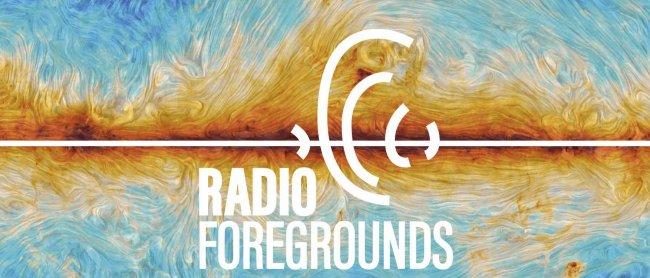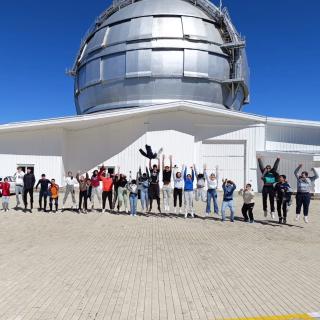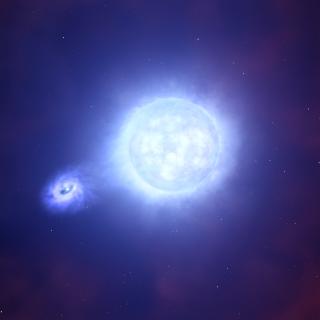CMB FOREGROUNDS is an international conference organized by the European project RADIOFOREGROUNDS, coordinated by the Instituto de Astrofísica de Canarias (IAC) and whose purpose is to go more deeply into the study of the microwave cosmic background radiation (CMB). During four days, until next Thursday, October 18th 80 participants from over 13 countries in Europe, America, and Asia will meet to analyze the data obtained by experiments such as QUIJOTE, at the Teide Observatory, and the Planck satellite.
The QUIJOTE project, at the Teide Observatory (Izaña Tenerife) comprises two telescopes of 21.5 m diameter. It is the result of a scientific collaboration between the IAC, the Instituto de Física de Cantabria, the Department of Communications Engineering of the University of Cantabria, the Jodrell Bank Observatory of the University of Manchester, and the Cavendish Laboratory of the University of Cambridge. Its prime aim is to study the polarization of the CMB, complementing the results obtained by Planck at low frequencies. Planck is a satellite of ESA (the European Space Agency) which is also designed to measure this radiation which comes from the very early universe, whose results will be presented at the end of 2018.
The principal investigator of the RADIOFOREGROUNDS project is José Alberto Rubiño, an IAC researcher.”The cosmic microwave background is fossil radiation” he explains” which comes from the first instants of the universo, and which we observe today at radio wavelengths. This radiation is studied by scientists because “Investigating the properties of its polarization we hope to find the indirect imprint of the existence of gravitational waves generated after the Big Bang” he says.
The importance of the polarization of the background radiation is such that “Its detection would open a new window on fundamental physics” stresses Rubiño, “allowing us to explor scales of energy billions of times greater than the scale we can explore now from Earth using particle accelerators. Studying this would le tus understand the energetic processes which took place at the birth of the universo” he adds.
The CMB-FOREGROUNDS conferene will deal with the future of research on the CMB, and with how to optimize the design of the new generation of experiments, both on the ground an in space. During the second day of the meeting the participants will visit the Teide Observatory, where they will see the QUIJOTE experiment, which started observing in November 2012.
The Canary Island Observatories are part of the network of Spanish Singular Scientific and Technical Infrastructure (ICTS).
Interesting links:
CMB-Foregrounds: http://www.iac.es/congreso/cmbforegrounds18/
RADIOFOREGROUNDS: http://www.radioforegrounds.eu/
Contacts at the IAC:
- José Alberto Rubiño (jalberto [at] iac.es (jalberto[at]iac[dot]es))
- Beatriz Ruiz-Granados (bearg [at] iac.es (bearg[at]iac[dot]es))
- Flavien Vansyngel (flavien [at] iac.es (flavien[at]iac[dot]es))
- Frederic Poidevin (fpoidevin [at] iac.es (fpoidevin[at]iac[dot]es))
- Federica Guidi (fguidi [at] iac.es (fguidi[at]iac[dot]es))
- Ricardo Génova (rgs [at] iac.es (rgs[at]iac[dot]es))



